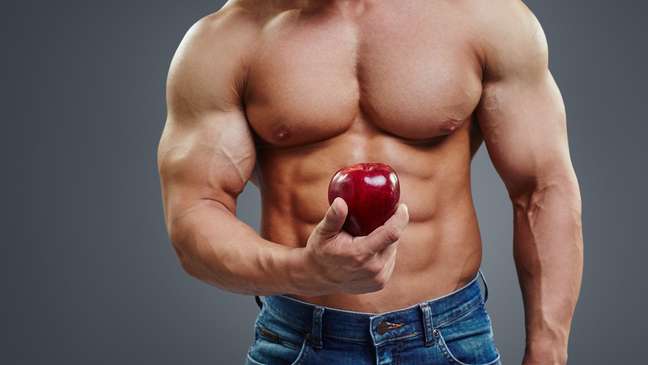The proposal was created to intensify vegan training with a focus on increasing muscle mass

Today, November 1st, is the world vegan day, a symbolic date born to celebrate a noble lifestyle. After all, being vegan goes far beyond simply opting for a fruit and vegetable diet.
However, despite being recognized for eating no meat and no animal products, the vegan habit still raises doubts. Especially for those just starting out. And one of these concerns the lack of animal protein in the diet, a fundamental nutrient for hypertrophy. But, after all, is it possible to be vegan and muscular at the same time?
IT’S POSSIBLE?
There are several non-animal proteins that meet the need, i.e. you can be vegan and muscular. Therefore, it is not only those who eat animal meat who gain muscle mass and what proves this is the research of the American journal The American Journal of Clinical Nutrition (The American Journal of Clinical Nutrition).
People with various types of food were analyzed by researchers in this journal, who found that 82% of the participants in this study achieved an RDA (Recommended Dietary Intake) of protein with or without meat consumption.
However, the first “step” for anyone who wants to be a muscular vegan is to eat 1.5g of protein per kilogram of weight. He remembers that both vegans and vegetarians can overcome hypermetrophy.
CHOICES FOR WORLD VEGAN DAY
What can be said is about the meal, that is, there is no need to look for that unusual food of the Brazilian’s daily dish to stand out in the diet. Just vary your options for healthy foods and ingredients.
Taking advantage of World Vegan Day, the first alternative is to focus on legumes, which are edible seeds that grow in pods. In addition to this “famous” feature, it has a significant amount of protein, rich in fiber and low in cholesterol. “Therefore, they are important for regulating blood sugar, preventing certain cancers, helping maintain a healthy weight and contributing to intestinal health,” explains nutritionist Adriana Stavro.
Adriana also created the quintet of examples of legumes to be used as a source of vegetable protein. Take a look below:
SOURCES OF VEGETABLE PROTEINS ON WORLD VEGANISM DAY
1. beans
21 g of vegetable protein per 100 g of food.
“The classic mix of beans and rice has a long history and they seem made for each other. Together they form a complete protein. Brown rice and white rice are low in essential amino acids (AA) lysine but high in methionine AA. . they are the opposite, rich in lysine and low in methionine. The combination of the two allows you to have enough of each. In addition, they provide fiber, B-6, vitamin E, phosphorus, calcium, iron, magnesium and potassium “, reveals Stavro .
2. Chickpeas
19 g of vegetable protein per 100 g of food.
“Chickpeas have protein, fiber, vitamins and can be used as a meat substitute in various recipes, such as stroganoff. It also provides tryptophan, which is an amino acid precursor to serotonin (the hormone of happiness),” explains the nutritionist. .
3. Peanuts
26 g of vegetable protein per 100 g of food.
“Source of iron, magnesium, phosphorus, vitamins of complex B and E and minerals important for the proper functioning of the body. Snacks and snacks can be eaten in salads and can be found in pasta. In this case it can be used on toast. breakfast, in the preparation of cakes, biscuits and pancakes “, says the specialist.
It is important to vary
4. Soy
From 16g to 51g (depending on the type) of vegetable protein per 100g of food.
“Soybeans contain protein, fiber, vitamins AC, calcium and phosphorus. There are several variants of this legume. In grains, in hydrolyzed, roasted and naturally occurring proteins (edamame),” he says.
5. Lentils
9 g of vegetable protein per 100 g of food.
“Studies confirm that eating lentils regularly reduces the risk of chronic diseases such as diabetes, obesity, cancer and heart problems. This is due to their high content of plant compounds called phenols,” concludes Stavro.
Sources: The American Journal of Clinical Nutrition and nutritionist Adriana Stavro
+The best content in your email for free. Choose your favorite Earth Newsletter. Click here!
Source: Terra
Benjamin Smith is a fashion journalist and author at Gossipify, known for his coverage of the latest fashion trends and industry insights. He writes about clothing, shoes, accessories, and runway shows, providing in-depth analysis and unique perspectives. He’s respected for his ability to spot emerging designers and trends, and for providing practical fashion advice to readers.








